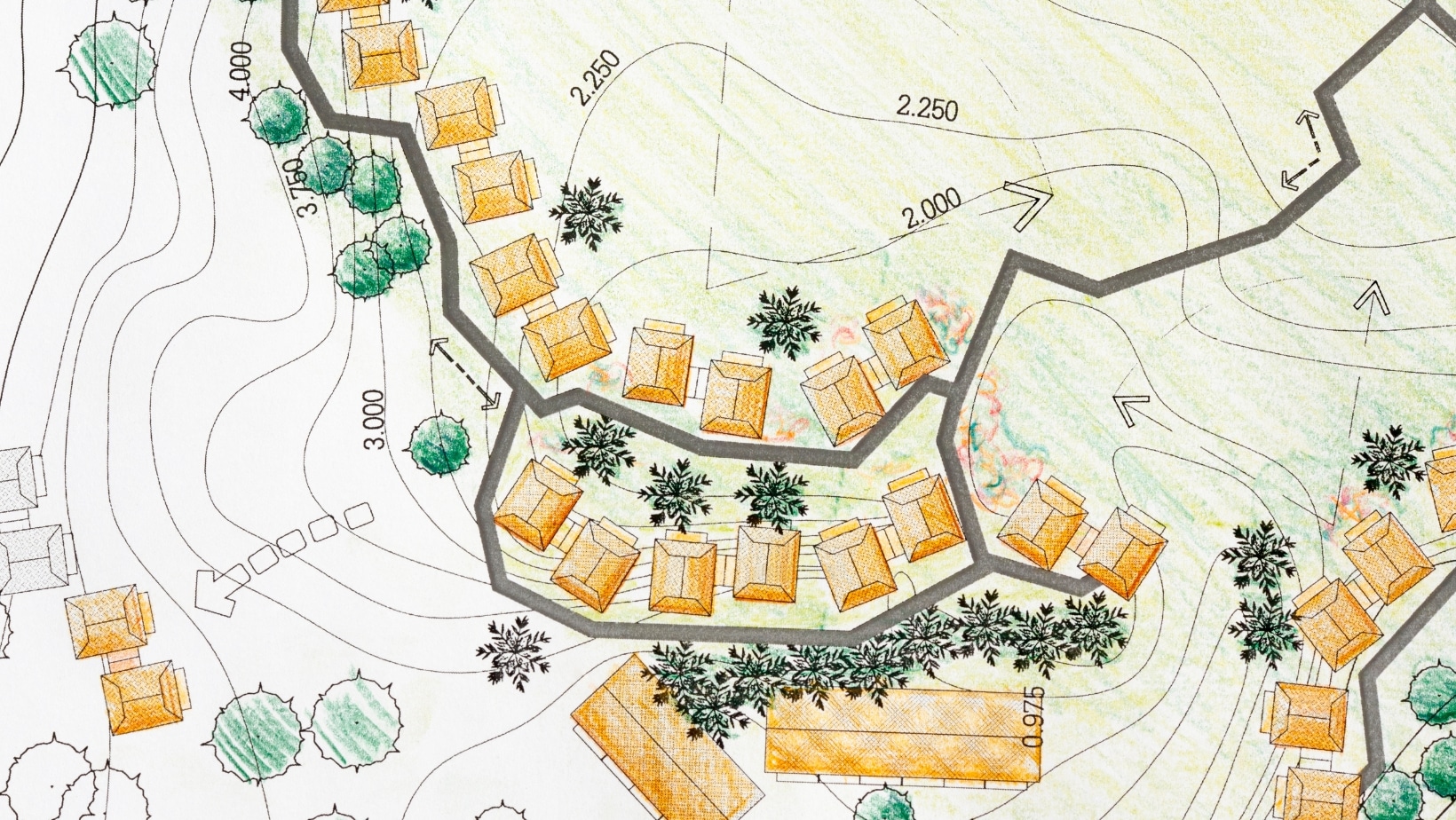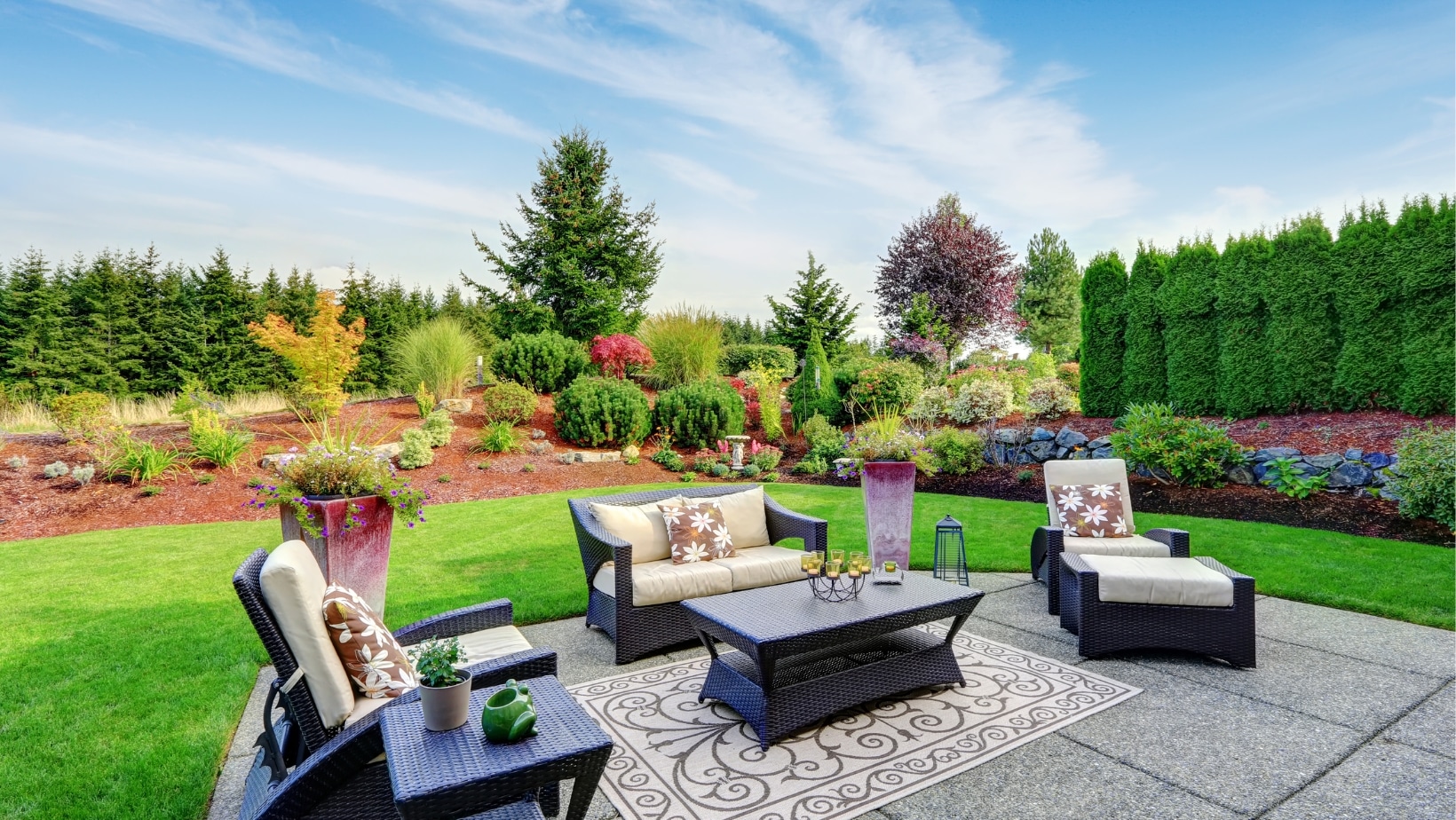Are you looking to transform your outdoor space into a beautiful and functional oasis? Look no further than our step-by-step landscaping guide, complete with a downloadable PDF, to help you get started.
From planning and design to plant selection and maintenance, this guide has everything you need to create the perfect landscape for your home.
NOTE: Get Your Ultimate Guide to Step by Step Landscaping PDF Download Below.
How to Start Landscaping From Scratch
When starting a landscaping project from scratch, there are several steps to consider:
First, clarify your goals and determine what you want to achieve with your landscape. Think about the overall design, functionality, and desired aesthetic.
Next, assess your site to understand its characteristics. Evaluate factors like soil quality, drainage, sunlight exposure, and existing features like trees or structures.
Develop a detailed landscape plan incorporating your goals and works within the site’s constraints. Consider elements like pathways, seating areas, plant beds, water features, and focal points. Aim for a cohesive and balanced design.
Prepare the soil by testing its composition and making any necessary amendments. Improve soil fertility and structure by adding organic matter or adjusting pH levels.
Choose plants that are suitable for your climate and site conditions. Consider factors such as sunlight requirements, water needs, and maintenance preferences. Aim for a mix of trees, shrubs, perennials, and annuals to create variety and visual interest.
Install any hardscape elements you’ve planned, such as pathways, patios, or retaining walls. Follow proper installation techniques and consider factors like durability, safety, and accessibility.
If necessary, install an irrigation system to ensure proper plant watering. Incorporate water-saving technologies and efficient irrigation methods to conserve water.
Plant your chosen plants according to your design plan, following recommended spacing and planting techniques. Apply mulch around the base of plants to suppress weeds, retain moisture, and improve soil health.
Establish a regular maintenance routine for your landscape. This includes tasks like watering, pruning, fertilizing, and pest control. Regularly inspect your plants and landscape for any issues and adjust as needed.
Remember that landscaping is ongoing, and your landscape will evolve. Be open to making adjustments and additions as your preferences change and your landscape matures.
By following these steps and investing time and effort into your landscaping project, you can create a beautiful and functional outdoor space that enhances your home and brings you joy for years.
Assess Your Space and Create a Plan
The first step in any successful landscaping project is to assess your space and create a plan.
Walk around your property and consider factors like sun exposure, soil type, and existing features like trees and structures. Use this information to create a rough sketch of your space and identify areas for improvement.
From there, you can develop a more detailed plan that includes plant selection, hardscaping elements, and any other features you want in your landscape design.
Choose the Right Plants for Your Climate and Soil
Choosing the right plants for your climate and soil is one of the most critical factors when landscaping.
Not all plants will thrive in all environments, so it’s essential to research and select plants that are well-suited to your specific location. Consider factors such as average temperature, rainfall, and soil type when choosing plants for your landscape.
You can also consult a local nursery or landscaping professional for the best plants for your area.
Install Hardscaping Features, Such as Patios and Walkways
In addition to plants, hardscaping features such as patios and walkways can add functionality and aesthetic appeal to your outdoor space.
When planning your hardscaping, consider the layout and flow of your landscape and the materials you want to use. Popular materials for patios and walkways include concrete, pavers, and natural stone.
Don’t forget to consider lighting and seating options to make your outdoor space more inviting.
Add Lighting and Water Features for Ambiance
To truly enhance the ambiance of your outdoor space, consider adding lighting and water features.
Outdoor lighting can create a warm and inviting atmosphere while providing safety and security.
Water features like fountains or ponds can add a calming and peaceful element to your landscape. These features can be incorporated into your hardscaping design or added as standalone elements.
Don’t be afraid to get creative and experiment with different lighting and water feature options to find what works best for your space.
Maintain Your Landscaping for Long-Term Success
Once you have completed your landscaping project, it’s essential to maintain it for long-term success.
Regular maintenance tasks include watering, fertilizing, pruning, and weeding. It’s also essential to look for any signs of pests or diseases and address them promptly.
By caring for your landscaping, you can ensure it thrives and provides enjoyment for years.
Step-by-step Lawn Care Guide
Caring for your lawn requires consistent effort and proper practices to ensure its health and vitality.
Here is a comprehensive lawn care guide to help you maintain a beautiful and thriving lawn.
Mowing: Regularly mow your lawn at the appropriate height for the grass species. Adjust the mower height to leave the grass blades about 2.5 to 3 inches long, as this promotes more profound root growth and helps shade out weeds.
Watering: Water deeply and infrequently, providing about 1 inch of water per week, including rainfall. Water in the early morning to reduce evaporation and minimize disease risk. Adjust the watering frequency based on precipitation and the specific needs of your lawn.
Fertilization: Apply a balanced lawn fertilizer based on soil test results or general recommendations. Fertilize during the active growing season, typically in spring and fall, following the instructions on the product packaging. Avoid over-fertilization, as it can lead to excessive growth and environmental pollution.
Weed Control: Regularly inspect your lawn for weeds and address them promptly. Spot-treat or remove weeds manually, and consider using pre-emergent herbicides in early spring to prevent weed seeds from germinating. Maintain a healthy lawn through proper mowing, watering, and fertilization to naturally suppress weed growth.
Aerating: Periodically aerate your lawn to alleviate soil compaction and promote better air, water, and nutrient movement in the root zone. Use a core aerator to remove small plugs of soil, typically in spring or fall when the grass is actively growing.
Overseeding: Over time, lawns can thin out due to wear, disease, or environmental stress. Overseed your property by spreading grass seed evenly over bare or thin areas. Rake the seed into the soil and keep it moist until germination occurs.
Pest Control: Monitor your lawn for pests like insects and diseases. Identify the specific problem or disease and choose appropriate control methods. Integrated Pest Management (IPM) practices, such as using resistant grass varieties, proper watering and fertilization, and natural pest control methods, are preferred.
Maintenance Practices: Regularly remove debris, such as leaves or branches, from your lawn to prevent the suffocation of grass. Avoid excessive foot traffic during wet periods, as it can compact the soil and damage the grass.
Seasonal Care: Adjust your lawn care practices based on seasonal needs. For example, increase watering frequency during hot and dry periods and mow at a higher height to promote drought resistance. Reduce watering and adjust the mowing frequency in cooler months to match slower grass growth.
Soil Testing: Periodically test your soil to assess its pH level and nutrient content. Soil testing helps you make informed decisions about fertilization and soil amendments specific to your lawn’s needs.
By following these lawn care practices consistently, you can maintain a healthy, vibrant, and resilient lawn that enhances the beauty of your outdoor space.
Remember that proper care and attention are crucial to achieving long-term success with your lawn.



